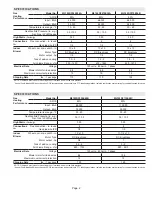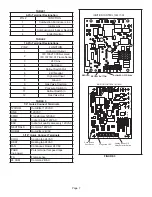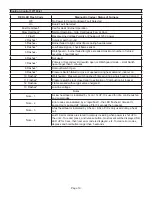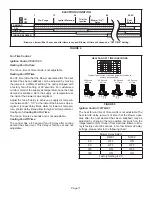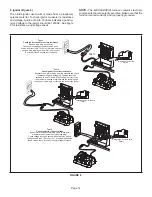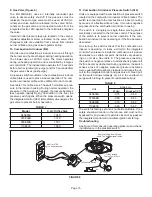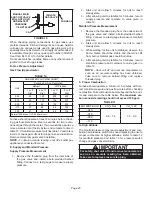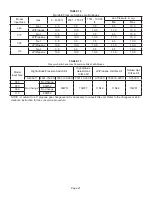
Page 6
I-UNIT COMPONENTS
Unit components are shown in figure 1.The gas valve,
combustion air inducer and burners can be accessed by
removing the upper access panel. Electrical components
are in the control box (figure 2) found in the blower section.
ELECTROSTATIC DISCHARGE (ESD)
Precautions and Procedures
CAUTION
Electrostatic discharge can affect
electronic components. Take precautions
to neutralize electrostatic charge by
touching your hand and tools to metal
prior to handling the control.
1. Control Transformer (T1)
A transformer located in the control box provides power to
the low voltage section of the unit. Transformers on all
models are rated 40VA with a 120V primary and a 24V
secondary.
2. Door Interlock Switch (S51)
A door interlock switch rated 14A at 125VAC is wired in
series with line voltage. When the blower door is removed
the unit will shut down.
NOTE -
The door interlock switch is a safety switch. Do
not by-pass or jumper switch.
CONTROL BOX
DOOR INTERLOCK
SWITCH (S51)
INTEGRATED CONTROL
(A92)
TRANSFORMER
(T1)
CIRCUIT
BREAKER
(CB8)
FIGURE 2
3. Circuit Breaker (CB8)
A 24V circuit breaker is also located in the control box. The
switch provides overcurrent protection to the transform
-
er (T1). The breaker is rated at 3A at 32V. If the current
exceeds this limit the breaker will trip and all unit opera
-
tion will shutdown. The breaker can be manually reset by
pressing the button on the face.
4. Integrated Control (A92)
103217-03 & 107163-01
WARNING
Shock hazard.
Disconnect power before servicing. Control is not
field repairable. If control is inoperable, simply
replace entire control.
Can cause injury or death. Unsafe operation will
result if repair is attempted.
The hot surface ignition control system consisting of an
integrated control (figure 3 with control terminal designa
-
tions in tables 1, 2 and 3), sensor and ignitor (figure 6).
The integrated control and ignitor work in combination to
ensure furnace ignition and ignitor durability. The integrat
-
ed control, controls all major furnace operations. The inte
-
grated control also features a RED LED for troubleshoot
-
ing and two accessory terminals rated at (1) one amp. The
nitride ignitor is made from a non-porous, high strength
proprietary ceramic material that provides long life and
trouble free maintenance.
Electronic Ignition (Figure 4)
On a call for heat the integrated control monitors the com
-
bustion air inducer pressure switch. The control will not
begin the heating cycle if the pressure switch is closed
(bypassed). Once the pressure switch is determined to
be open, the combustion air inducer is energized. When
the differential in the pressure switch is great enough, the
pressure switch closes and a 15-second pre-purge be
-
gins. If the pressure switch is not proven within 2-1/2 min
-
utes, the integrated control goes into Watchguard-Pres
-
sure Switch mode for a 5-minute re-set period.
After the 15-second pre-purge period, the ignitor warms
up for 20 seconds during which the gas valve opens at
19 seconds for a 4-second trial for ignition. The ignitor re
-
mains energized for the first 3 seconds during the 4 second
trial. If ignition is not proved during the 4-second period,
the integrated control will try four more times with an inter
purge and warm-up time between trials of 35 seconds.
After a total of five trials for ignition (including the initial
trial), the integrated control goes into Watchguard-Flame
Failure mode. After a 60-minute reset period, the integrat
-
ed control will begin the ignition sequence again.


